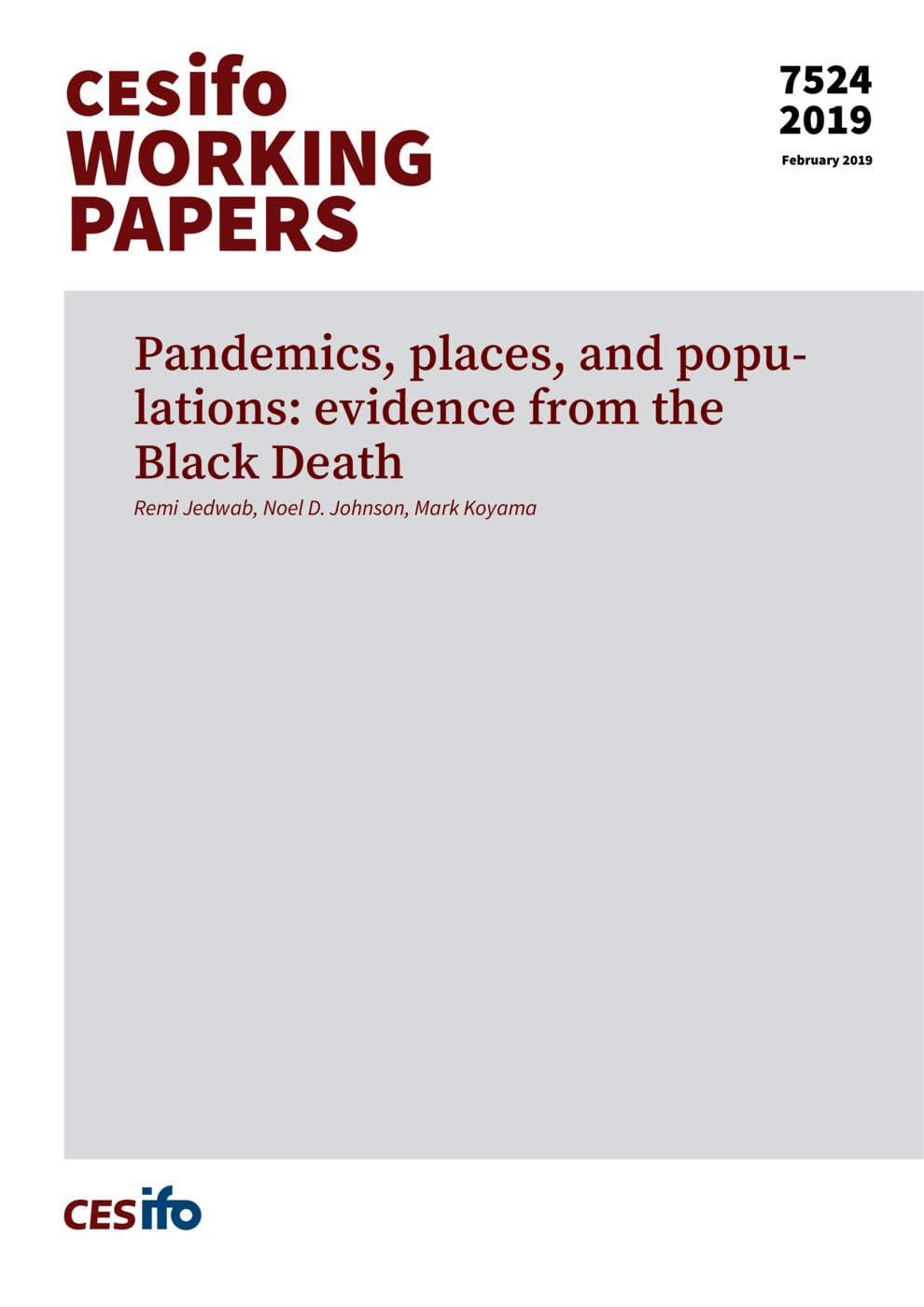Pandemics, places, and populations: evidence from the Black Death
CESifo, Munich, 2019
CESifo Working Paper No. 7524

The Black Death killed 40% of Europe’s population between 1347-1352, making it one of the largest shocks in the history of mankind. Despite its historical importance, little is known about its spatial effects and the effects of pandemics more generally. Using a novel dataset that provides information on spatial variation in Plague mortality at the city level, as well as various identification strategies, we explore the short-run and long-run impacts of the Black Death on city growth. On average, cities recovered their pre-Plague populations within two centuries. In addition, aggregate convergence masked heterogeneity in urban recovery. We show that both of these facts are consistent with a Malthusian model in which population returns to high-mortality locations endowed with more rural and urban fixed factors of production. Land suitability and natural and historical trade networks played a vital role in urban recovery. Our study highlights the role played by pandemics in determining both the sizes and placements of populations.
Fiscal Policy, Macroeconomics and Growth
Resources and Environment